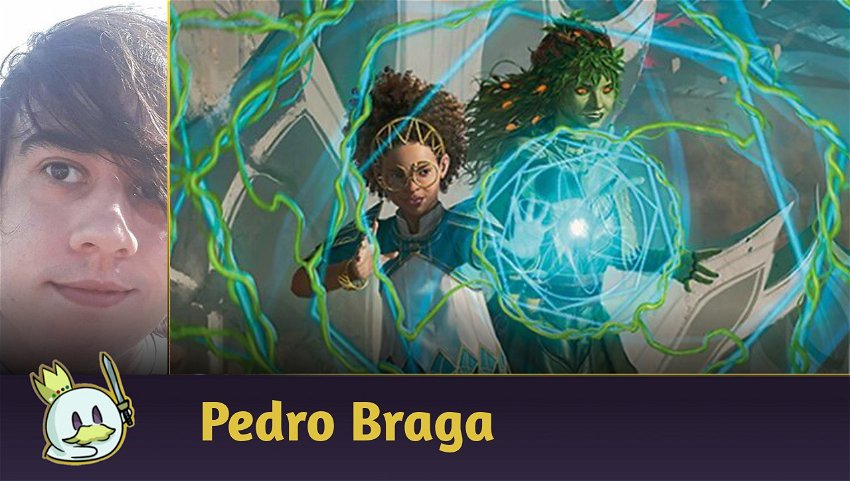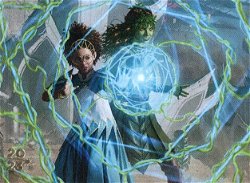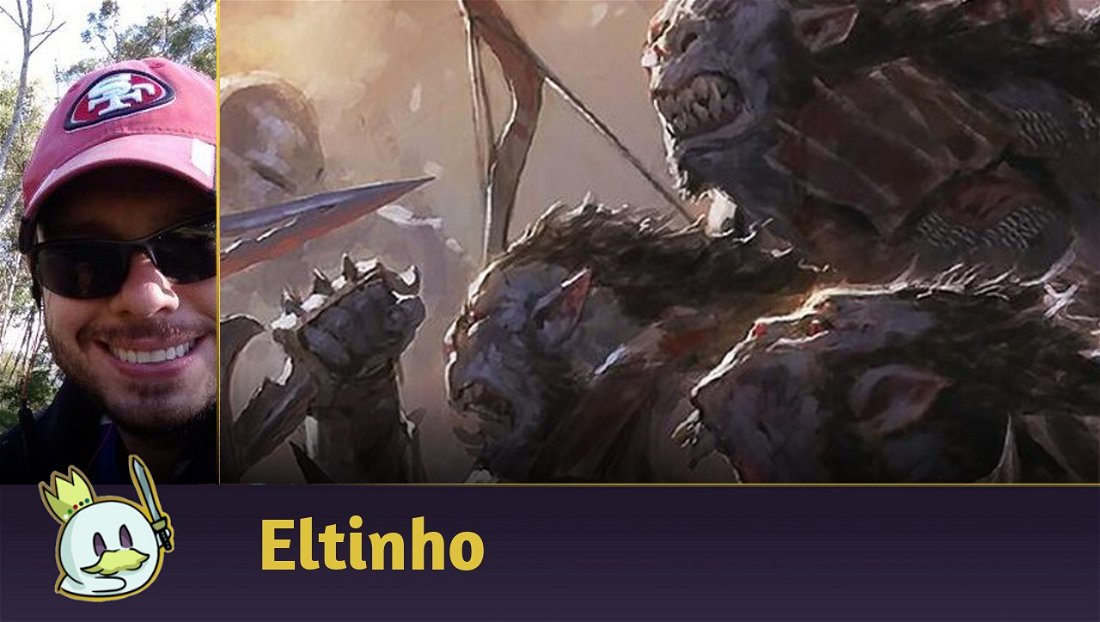Introduction
One of the best things about having a new spoiler season is being able to get a closer look at the new cards and discuss how to build the best decks for each one. In a popular format such as Commander, in which decks are constantly evolving with hypothesis, tests, strategies and new builds, it is possible to have access to great deck constructions quickly, satisfying players who are enthusiastic about the news.
In general, there are two types of commanders that cheer everyone up. One of them is that very specific commander, simple to understand. The one that you look at and think “Wow, this legendary creature is perfect to make an excellent Grixis Mill!”, and that in general will give a new twist to a very obvious, but beloved, strategy.
The other type is the commander we are going to evaluate today, Zimone and Dina, the one that is much more complex to understand, as it is not limited to a single ability, but you can look at it and think “With these colors and abilities I can put a lot of strong card.”. They are usually legends with powerful effects, but who don't have an obvious path to follow, and are more easily customizable.
In today's article, we are going to talk about this duo and make a deck with a very cool and out of the box build, which caught my attention.
Zimone and Dina, the Commanders
Zimone and Dina are two characters from the Strixhaven school of magic who, like many characters in March of the Machine, are joining forces against the Phyrexian invasion, appearing together on the same card. As is customary in card design for these duos, the creatures have multiple abilities that mirror the original abilities of each of the characters shown on them.

The first one is a simple life drain that deals two points of damage to an opponent and gives you those two points as a positive balance. What's interesting is the trigger for this, which involves you drawing your second card that turn, and only your second, with no recurrence of the ability for the first or third card you draw. On the bright side, while completing this condition is easier on your turn, you can do it in as many turns as you need.
The second is an activated ability, which at the cost of sacrificing another creature, lets you draw a card and put a tapped land onto the battlefield, almost like a Growth Spiral with legs. The best thing is that if you already have eight or more lands on the board, which is easy with this deck, the effect is repeated and can even help you give the necessary two draws on other turns.
And it is from these abilities that we will work the deck. As previously mentioned, they don't reflect a specific strategy directly, obviously, but they are still capable of generating all the necessary situations for different aspects of the game.
The Deck
As always, here's the deck's complete decklist with all of its vital combos and strategies:
I, personally, like to use Dictate of Erebos along with Zimone and Dina, since we have a way of recursively sacrificing our creatures and forcing opponents to do that as well.
Landfall

Since this is a deck that has many devices to recursively put lands on the battlefield, we will resort to the popular Landfall mechanic. And that even extends to cards that don't have the mechanic printed directly on the card itself, but had their text updated in the Gatherer, like Tireless Tracker and Greensleeves, Maro-Sorcerer.
Generally speaking, since Zimone and Dina can grant you plenty of lands in play, using the mechanic is a great idea and will bring you a lot of value, but there are those cards that can help your commanders retroactively.
Scute Swarm, Rampaging Baloths, Zendikar's Roil and Greensleeves, Maro-Sorcerer create creature tokens upon triggering, which can make great targets for sacrifice and pay the cost of the commander's activated ability.
But among these, there is one that is the best of all in this regard. Bloodghast is a creature whose landfall ability allows it to come back from the graveyard, creating the possibility that you can sacrifice it recursively to feed its commander's ability.
We also make use of the banned in many formats Field of the Dead, which creates 2/2 Zombie tokens for each land that enters the battlefield, once we've already met the condition of having seven lands with different names in play, which is easy in a Commander game.
In a very unusual situation, it is possible to use Curse of the Restless Dead on yourself instead of your opponents, so that every land trigger also generates zombies for you, without having to depend on others.
There is also the possibility of making other combos with Landfall, but we will touch on this subject later in the article…
Gates and Maze's End

Another land subtheme we run in this deck are gates. Thanks to Maze’s End it is possible to win when we gather ten Gates with different names.
Although we only deal with three colors, that is, three different guilds of Ravnica; Golgari 



In addition, there are cards like Circuitous Route, Guild Summit and Nine-Fingers Keene that help with this plan, making your ramp and ability to select gates better and better, with greater expressiveness of this land type in play.
Second Draw

Originally, in Throne of Eldraine, the ability to trigger an effect with just your second draw of the turn was heavily focused on the blue and red colors, as Improbable Alliance can exemplify well. But as the sets went on, the ability became almost mostly blue, with one or two other color cards other than white making up that ability.
Thus, we have some cards with a similar effect in the deck, such as Jolrael, Mwonvuli Recluse or Gixian Puppeteer, the latter having an ability very similar to that of the commander, but for all opposing players instead of a single target.
Although it is a simple contribution to the play style, these cards synergize a lot with the main piece of the deck when they are on the board, triggering great effects when the second draw goal is reached.
Minn, Wily Illusionist can be used to generate Illusion Tokens, which can be sacrificed to Zimone and Dina's ability, in synergy with Minn's second ability, which will allow you to put permanents into play (potentially land).
Combos
The deck has several interactions well focused on gearing up a series of repeated patterns, the famous combos, capable of completely changing the game stage and even winning you games with a few cards.

A simple one that can be included in any green deck is Cultivator Colossus and Abundance, a combo that when well executed can bring all your lands to the battlefield and, once Abundance allows you to rearrange the cards that you would put at the bottom of the deck, you can also organize the cards in your deck in any order you want. And, of course, the combo allows for multiple landfall activations.

The Zimone and Dina themselves can work in different ways. Using a Bloodghast or another creature that brings more creatures to the field thanks to a Landfall and something that allows you to untap creatures, such as Retreat to Coralhelm, it is possible to fit several activations of the commander's ability in a row.
Other cards like Intruder Alarm and Freed from the Real also allow this dance of tapping and untapping your commander, to trigger combos in a row.

With Stone-Seeder Hierophant, or Kiora's Follower, and a bounce land that generates blue, like Simic Growth Chamber and Freed from the Real it is possible to create infinite green or black mana when using Dimir Aqueduct.

And of course, we have Kodama of the East Tree, which works with bounce lands such as Golgari Rot Farm. So with a Bounceland and Kodama, we can cast infinite tokens from a landfall source, such as Scute Swarm, which will feed the Kodama's own ability, allowing everything with Landfall to have as many triggers as needed.
Budget Version - Zimone and Dina
And now, a more accessible version of the deck, which despite not using as many expensive pieces, can also be a good choice in a game with friends:
Conclusion
Zimone and Dina resulted in a slightly different deck than what I'm used to. I usually look for decks that create more surprising and fun situations, while this deck delivers a greater focus on winning games.
Even so, the deck's many infinite combos create beautiful situations at the table, with different tokens and an abundance of resources. It really is a beautiful sight for your opponents to see, just before you use this Strixhaven duo to stomp over their field.
















— 评论 0
, 反应 1
成为第一个发表评论的人